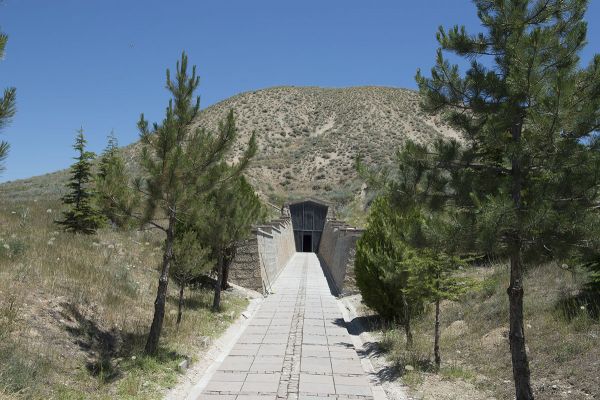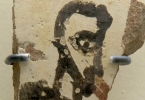Buy or gift a stand-alone digital subscription and get unlimited access to dozens of back issues for just £18.99 / $18.99 a year.
Please register at www.exacteditions.com/digital/cornucopia with your subscriber account number or contact subscriptions@cornucopia.net
Buy a digital subscription Go to the Digital Edition
King Midas's tomb and a figure in the museum opposite (Dick Osseman)

The 300-metre wide ‘King Midas’ burial mound, one of the largest of its kind, is just one of more than 80 tells that have been excavated in the ancient city of Gordion. The mound has now been dated to 740 BC, some time after the probable reign of the legendary monarch with a golden touch. Archaeologists date the city to 3000 BC and it reached its zenith as the Phrygian capital in the 8th century BC. The site extends over 72 hectares and finds are in the on-site museum. Gideon’s knot, the ultimate challenge to be overcome, takes its name from here as a reference to Alexander the Great undoing it to enter the city and become ruler of Asia.
The University of Pennsylvania has been involved in excavations here since the 1950s, and in 2016 the Penn Museum mounted a large exhibition, titled The Golden Age of King Midas.
The sight lies in the town of Yassıhöyük 18km from Polatlı on the Izmir-Ankara highway, 70km from Ankara.
The landscape is green and idyllic. It might be the backdrop in a Renaissance oil painting of some myth from the ancient world – which, in a way, is exactly what it is. The kings and princes of this land turned to dust long ago, and now many of the villagers are leaving, too. A sense of timelessness hangs over the land. Everywhere along its roads, one sees monuments and fragments, chunks hewn from a past that has almost assumed the status of legend: the times of Midas, Gordius, Alcibiades, and Seyyit Battal Gazi, the Romans, Seljuks and Ottomans.
This is Phrygia, one of the most beautiful and historic regions of Turkey, but a genuine case of a land that time and modernity have so far forgotten. Although the first ominous stirrings of tourism and development can be detected, as yet the bulldozers and construction machines have shown no signs of moving in.
The name Phrygia, a purely historical and geographical label, comes from the Phrygians, a people who dominated western central Anatolia during most of the gap between the fall of the Hittites, just before 1150BC, and about 690BC, when they were conquered by the Cimmerians. For a while they were one of the most powerful kingdoms in the Near East, and the beauty of their little-known monuments and artefacts suggests that, had the dice of history rolled more kindly, they might have been an powerful influence on world art.
 Issue 66, December 2023
Turkey’s Centenary Issue
Issue 66, December 2023
Turkey’s Centenary Issue

Cornucopia works in partnership with the digital publishing platform Exact Editions to offer individual and institutional subscribers unlimited access to a searchable archive of fascinating back issues and every newly published issue. The digital edition of Cornucopia is available cross-platform on web, iOS and Android and offers a comprehensive search function, allowing the title’s cultural content to be delved into at the touch of a button.
Digital Subscription: £18.99 / $18.99 (1 year)
Subscribe now